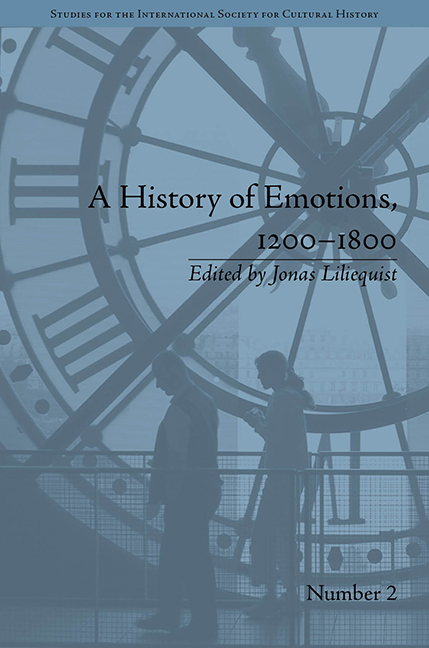Book contents
- Frontmatter
- Contents
- List of Contributors
- List of Figures
- Introduction
- I Theoretical Issues
- II Emotional Repertoires
- 3 Preachers, Saints, and Sinners: Emotional Repertoires in High Medieval Religious Role Models
- 4 Theology and Interiority: Emotions as Evidence of the Working of Grace in Elizabethan and Stuart Conversion Narratives
- 5 ‘Finer’ Feelings: Sociability, Sensibility and the Emotions of Gens de Lettres in Eighteenth-Century France
- III Music and Art
- IV Gender, Sexuality and the Body
- V Uses of Emotions
- Notes
- Index
3 - Preachers, Saints, and Sinners: Emotional Repertoires in High Medieval Religious Role Models
from II - Emotional Repertoires
- Frontmatter
- Contents
- List of Contributors
- List of Figures
- Introduction
- I Theoretical Issues
- II Emotional Repertoires
- 3 Preachers, Saints, and Sinners: Emotional Repertoires in High Medieval Religious Role Models
- 4 Theology and Interiority: Emotions as Evidence of the Working of Grace in Elizabethan and Stuart Conversion Narratives
- 5 ‘Finer’ Feelings: Sociability, Sensibility and the Emotions of Gens de Lettres in Eighteenth-Century France
- III Music and Art
- IV Gender, Sexuality and the Body
- V Uses of Emotions
- Notes
- Index
Summary
O Lord, born of the virgin … smiling at his mother, through this smile allow me, I beg, to participate in your perpetual happinesss … O Lord, sucking at your mother's breast … reclining on your mother's lap … O Lord, hardly able to speak in a babbling voice … circling the mother as small children do … kissing your mother's sweet lips … and embracing the beloved mother's neck …
This stunning fragment of a much longer prayer in a twelfth century prayerbook, probably from the female community at Nonnberg in the bishopric of Salzburg, may rightly, or so it seems, be labelled ‘emotional’, even if we would perhaps not expect this kind of expression in a monastic context. But what directs our expectations when reading such a text? What indicates that we are dealing with ‘emotions’ here? And if we are, how can we be sure that the medieval contemporaries' understanding of ‘emotions’ and their modes of expression are accessible to our modern approaches and comparable to our notions? In this chapter I want to approach these questions via a close reading of monastic source material of the twelfth and early thirteenth centuries.
Current debates on ‘emotions’ in the humanities, cultural studies and sciences alike are characterized by a range of different attempts to enumerate, classify and define what ‘emotions’ are; so far, though, they seem to defy a systematic definition.
- Type
- Chapter
- Information
- A History of Emotions, 1200–1800 , pp. 49 - 64Publisher: Pickering & ChattoFirst published in: 2014



